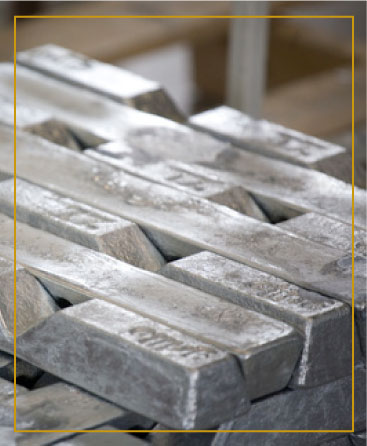Zinc balls
Zinc is an extremely versatile metal, which is why it plays a vital role in industrial activity and is used in countless applications in different sectors. For example, zinc is used in a wide range of applications in the transport, infrastructure, consumer goods and food production sectors. In addition, due to its durability, the use of zinc helps save natural resources and promotes sustainability. And what´s more, zinc can be recovered at the end of its service life with no loss in quality or properties.
The most common use of zinc is to protect steel against corrosion, where the zinc acts as a sacrificial anode.
This coating, using a steel galvanizing process, prolongs the life of the steel, reduces maintenance costs and, as such, reduces the environmental impact arising from these costs
Production of Zinc
More than 11 million tons of zinc are produced annually worldwide, almost 50% of which is used for galvanizing steel, or in other words, to protect it against corrosion. Around 17% is used to produce brass and another 17% in the production of zinc-based alloys, mainly in the die-casting sector. Finally, significant amounts are also used in compounds, such as zinc oxide and zinc sulphate, in addition to zinc sheets used in roofs, gutters and drainpipes.
The benefits of electrolytic zinc, of 99.995% minimum purity, make it the ideal raw material for these purposes.
Composition of Clerins Zinc balls

| ELEMENT | % |
|---|---|
| Pb | Max. 0.003 |
| Cd | Max. 0.003 |
| Fe | Max. 0.002 |
| Sn | Max. 0.001 |
| Cu | Max. 0.001 |
| Al | Max. 0.001 |
| Zn | Max. 99.995 |

Clerins Zinc Ball Quality Certification
Our spherical zinc anodes for electroplating, also known as zinc balls, are produced in accordance with current regulations (Standard BS EN 1179:2003 / Standard ASTM B6-03).
You can access the technical data sheet for zinc balls here (PDF)

